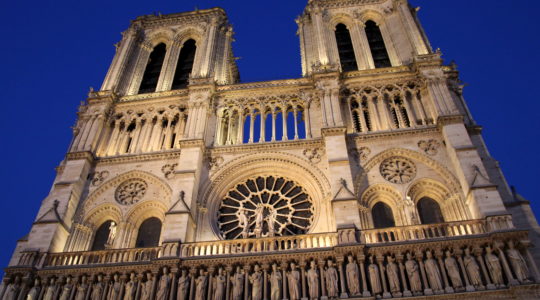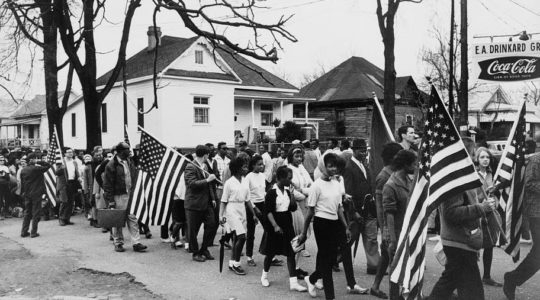An unusual collection of books relating to the history and literature of the Jews has been placed on exhibition in the Sterling Memorial Library of Yale University, in honor of the 91st Anniversary of the birth of Dr. Alexander Kohut, the noted Hebraic scholar who was professor at the Jewish Theological Seminary of New York. Most of the Hebraica and Judaica on exhibition belongs to the collection of Hebrew books formerly in Dr. Kohut’s private library, and to the collections brought together by the late Dr. Selah Merrill, United States Consul in Jerusalem.
In honor of the exhibition and to mark its formal opening, Professor Alexander Marks, librarian of the Jewish Theological Seminary of America, will lecture on “Hebrew Printing in the 15th and 16th Centuries” in the Lecture Room of the Sterling Memorial Library Monday at 5.00 o’clock.
Dr. Kohut’s memory is perpetuated at Yale by the Alexander Kohut Memorial Publication Fund, the Alexander Kohut Memorial Fellowship in Semitics, and the Alexander Kohut Collection of Judaica. On the Memorial Publication Fund, the Yale University Press has published several outstanding contributions to knowledge including Professor Albert T. Clay’s “Origin of Biblical Traditions,” and “The Empire of the Amorites.”
YALE COLLEGE BOOKS OF 1742
One section of the exhibition illustrates Yale’s part in the History of Hebrew studies in America. The center of this exhibit is occupied by the Hebrew papers of Dr. Ezra Stiles, president of Yale College from 1778 to 1795, who was known for his Hebrew scholarship. The papers consist of his notes and essays, in Hebrew and English, on various topics in Hebrew literature and theology, as well his Hebrew correspondence with H. I. Carigal, a learned rabbi from Palestine, with whom President Stiles spent many hours in conversation.
Another part represents a selection of books of Jewish interest which formed part of the Yale College Library in 1742, when the first printed catalogue of the Library’s books was published. Many of these books came to the Library much earlier, some as early as 1714.
The exhibition contains the earliest Hebrew book containing a description and a rough map of America, this being the Cosmography of Abraham Farissol, which was composed in 1524 and published in 1586. Next to this, in chronological order is a copy of the Bay Psalm Book, printed at Cambridge, Mass., in 1640, the first book printed in North America and the first to contain Hebrew type. The text of this psalter is a direct translation from the Hebrew by “thirty pious and learned Ministers,” and is prefaced by a learned dissertation on the Hebrew language and poetry, written by Richard Mather, the first of the Mather family in New England.
Another psalter, in Hebrew and English, prepared by the Dutch Orientalist Leusden and printed at London in 1688, is known for the fact that it owed its publication to Dr. Increase Mather, president of Harvard College, who had informed Leusden of the need felt in New England for such a book. Two other items of Harvard interest are the Hebrew grammars of Monis, published in 1735, and of Sewall (1763), who were both instructors at Harvard and pioneers in their work in America. Among the other Americana is the first Hebrew bible published in America, which was issued in Philadelphia in 1814.
JOSEPHUS EDITIONS SHOWN
The Merrill Collection of Flavius Josephus is represented by a series of rare editions of the works of that famous Judeo-Greek historian. {SPAN}###{/SPAN} incunabula editions ranging {SPAN}f###{/SPAN} 1475 to 1499 are followed by {SPAN}###{/SPAN} series of sixteenth century {SPAN}volu###{/SPAN} in various languages, including {SPAN}###{/SPAN} first edition of the original {SPAN}G###{/SPAN} text, published at Basel in 1544, {SPAN}###{/SPAN} the edition of the Yiddish {SPAN}p###{/SPAN} phrase brought out at Zurich 1546 by Christopher {SPAN}Froschha##{/SPAN} who had printed also the first {SPAN}c###plete{/SPAN} edition of the English {SPAN}P###{/SPAN} the Cloversdale version of 1535.
The beginning of Hebrew stu### in Western Europe is illustrated ### an exhibit containing a selection philological works, from the p##eering Hebrew grammar books Johann Reuchlin, published in ### to Johann Buxtorf’s monume### Rabbinic Dictionary, which appe### in 1639. Another exhibit, consis## of rare editions of representa### Hebrew works, illustrates the de###opment of Hebrew typography f### about 1480 down to the twen## century. Specimens are exhibit of Hebrew printing done in I### Germany, France, England, Holl### Switzerland, Poland, Bohe### Crimea, and Turkey.
A dark side of Hebrew lite### history is represented by two ######hibits of fifteenth and sixteenth ###tury works of anti-Jewish chara### and the sixteenth and seventeen century books of Italian origin###sored by the ecclesiastical aut###ties. The latter exhibit contain### series of autographs of censors# pointed by the Inquisition, as ### as specimens of books censore# them.
Among the Oriental collectio# Yale, of which the Landberg C###tion of Arabic manuscripts and ### library of the American Ori### Society (now on permanent dep### form distinguished sections, is ###cluded an outstanding collecti### Judaica.
STRONG IN PHILOLOGY
Until 1914 the collection was {SPAN}###{/SPAN} up of material obtained by {SPAN}pur#{/SPAN} and by small gifts during the {SPAN}###{/SPAN} centuries of Yale’s existence. {SPAN}W###{/SPAN} was laid chiefly upon philology {SPAN}###{/SPAN} a very fine collection of {SPAN}He###{/SPAN} grammars and dictionaries {SPAN}wa#{/SPAN} cumulated. There is {SPAN}scarce##{/SPAN} important learned work by a {SPAN}###pean{/SPAN} scholar on Hebrew {SPAN}phil###{/SPAN} which is not represented, {SPAN}fro#{/SPAN} epochal “Rudimenta” of {SPAN}Reu###{/SPAN} published in 1506, to the {SPAN}sta###{/SPAN} grammar of Gesenius and the {SPAN}###mental{/SPAN} Thesaurus of {SPAN}Ben-Ye###{/SPAN} now in its seventh volume.
Another section, built up a### exclusively by purchase, is th# Yiddish literature. It numbers ### a thousand volumes and contai# of the best of both old and Yiddish belles lettres produc### the old and the new worlds.
The first great addition was ### in June, 1915, when Yale ac## the collection of editions and ###lations of the works of Flaviu###ephus, made by the late Dr. ### rill, who was an archaeolog# note. This gift, presented by ### Merrill, comprised over 1400###umes, the incunabula and a ### series of beautiful sixteenth c### editions issued by many of th# presses, such as the Aldine# those of Gregorious de Gr### Bernardinus Vercellensis, an###drea d’Asola in Venice, Fr### Regnault and Jean Petit in P###In the fall of the same ye### second addition was made ### collection, the gift of the libr### Dr. Kohut, Professor in the ### Theological Seminary of A### The collection was donated ### son, Dr. George Alexander ### of New York City, whose ###quent benefactions, the Ale# Kohut memorial fellowship in###itics and the Memorial publi# fund, both at Yale, the Bett### memorial foundation at th### braisches Padagogium in ### and the Alexander Kohut me### foundation, also in Vienna, f### lasting monument to their cre###A fine supplement to the ### collection of Josephus is the ###
JTA has documented Jewish history in real-time for over a century. Keep our journalism strong by joining us in supporting independent, award-winning reporting.
The Archive of the Jewish Telegraphic Agency includes articles published from 1923 to 2008. Archive stories reflect the journalistic standards and practices of the time they were published.



